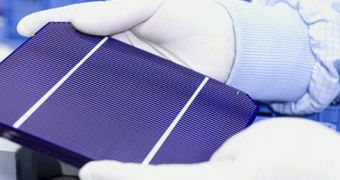Improving the efficiency of solar cells is one of the long-term goals scientists in this field of research have, but thus far their efforts on this front have been slow. Now, a company in the United States plans to take the technology one step further, by integrating it with the methods used to create optical fibers.
What researchers at Santa Barbara, California-based Solar3D plan to do is increase the efficiency of solar cells by utilizing the same light-trapping concept that underlies the operating principle of optical fiber technologies.
Such a three-dimensional design, the company believes, might be used to channel light through silicon substrates, trapping it within the substance, and allowing the solar cells to produce more electrical energy than ever before.
At this point, the most effective solar panels have a conversion efficiency of 15 to 18 percent, even though the theoretical limit for silicon is 29 percent. Researchers are going out of their way to create a solar cell that would draw as near as possible to this limit.
The design Solar3D puts forth has not yet been assessed in terms of efficiency, investigators say, but what is certain is that it may well exceed the 20 percent conversion efficiency threshold, Technology Review reports. That in itself would be a major breakthrough.
“We think it's going to approach silicon's theoretical efficiency. We won't get to 29 percent – nobody's going to get that high with silicon – but we're hoping to get as close as possible,” Solar3D CEO Jim Nelson explains.
He adds that the company is working towards reducing two directions through which light is lost in conventional solar cells. The first is the fact that no less than 30 percent of incoming light is lost through reflection.
The second is that many electrons produced by interactions between photons and silicon are absorbed in the latter before they are redirected through electrical cables, and converted into usable electricity.
“Our whole approach is made with mass production in mind. Our whole purpose is to make it competitive,” Nelson says, referring to stiff competition from producers in China. The latter put cheaper devices on the market, undermining the production of American manufacturers.
The company says that it plans to have a prototype for its new device out on the market for testing by the end of the year. If everything goes well, then we could expect to see 3D solar cells entering mass production within the next couple of years.

 14 DAY TRIAL //
14 DAY TRIAL //